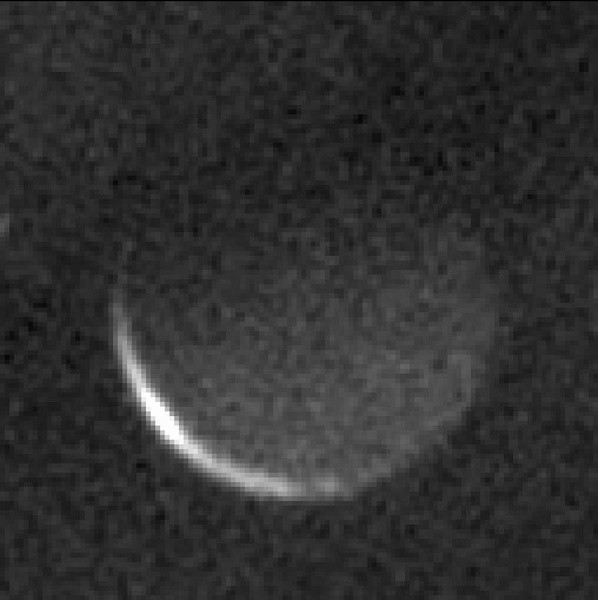By Ana Verayo, | February 03, 2016

Charon, Pluto's largest moon, was captured by New Horizons on its night side.
In a newly released photo of NASA, Pluto's biggest moon, Charon's night side glows eerily with a sliver of light on its horizon, where it still gets its sunlight from the distant sun.
This image is captured by the New Horizons spacecraft last July 2015, after three days of completing its epic flyby of the dwarf planet, Pluto. This extremely close encounter of the probe with Pluto was just within 7,800 miles of it surface. However, Charon's night side was captured from a distance of 1.9 million miles, according to the mission team.
Like Us on Facebook
NASA officials say that Charon's night time terrain and landscapes are also visible when streamed by sunlight that is reflected from Pluto, although they are highlighted delicately amidst the moon's complex surface. This is also similar to "earthshine" when it lights a new moon every month, where this image was released on January 22.
Mission scientists say that these images are now being used to map out portions of Charon that New Horizons was not able to capture during its flyby. Apart from this, Charon's southern polar region which is the top area on the image, apparently entered polar night way back in 1987 and will not be able to see the light of the sun until 2107. Temperatures on the dark side of Charon will drop to near absolute zero for this extremely epic long winter.
Charon possesses a diameter of 753 miles which is almost half as wide as the dwarf planet itself, where the other four moons namely, Nix, Styx, Hydra and Kerberos are all relatively small in comparison. Nix and Hydra only measure 33 miles wide and 27 miles across respectively where Styx and Kerberos are both even smaller.
The New Horizons probe was launched in January 2006, costing US $720 million, where it took almost a decade travelling to the distant dwarf planet, at more than 4.5 billion miles away.
To date, the tiny probe is now targeting a small icy object in the Kuiper Belt, known as 2014 MU69, which is located some 1 billion miles away from Pluto. New Horizons is slated to reach this object by January 2019.
Now, the spacecraft is working hard at transmitting images and precious data back to Earth from its July 2015 flyby, where mission scientists believe that this will all be completed by the end of the year.
-
Use of Coronavirus Pandemic Drones Raises Privacy Concerns: Drones Spread Fear, Local Officials Say

-
Coronavirus Hampers The Delivery Of Lockheed Martin F-35 Stealth Fighters For 2020

-
Instagram Speeds Up Plans to Add Account Memorialization Feature Due to COVID-19 Deaths

-
NASA: Perseverance Plans to Bring 'Mars Rock' to Earth in 2031

-
600 Dead And 3,000 In The Hospital as Iranians Believed Drinking High-Concentrations of Alcohol Can Cure The Coronavirus

-
600 Dead And 3,000 In The Hospital as Iranians Believed Drinking High-Concentrations of Alcohol Can Cure The Coronavirus

-
COVID-19: Doctors, Nurses Use Virtual Reality to Learn New Skills in Treating Coronavirus Patients








